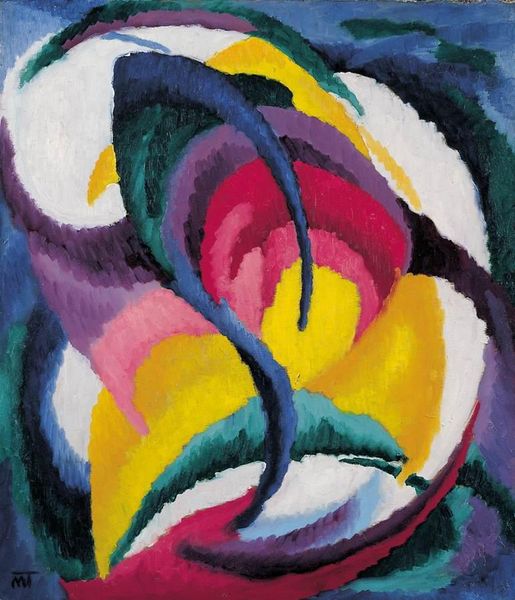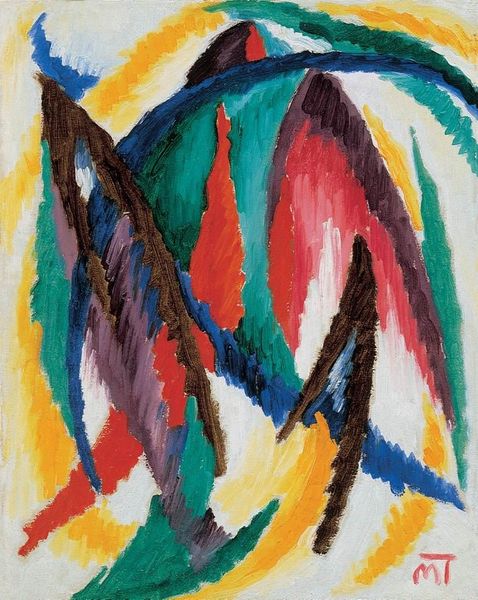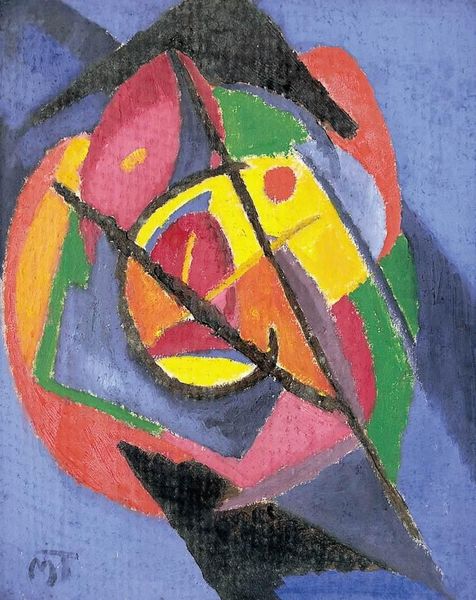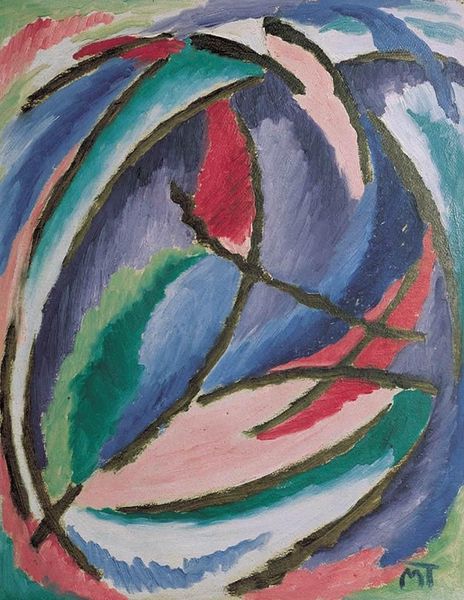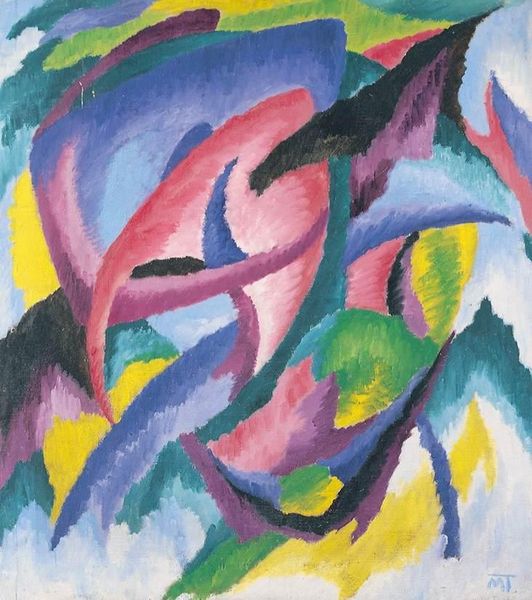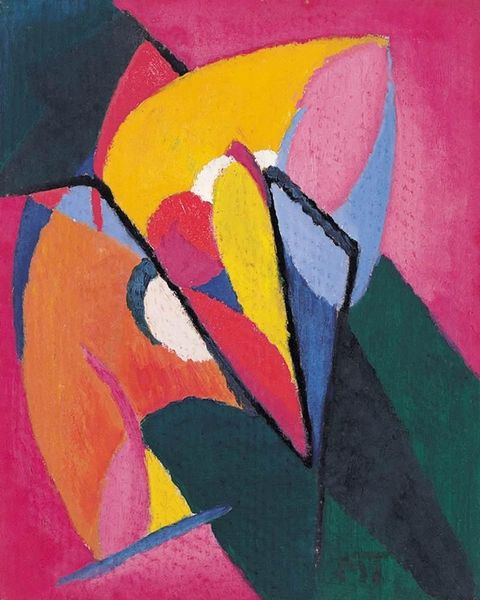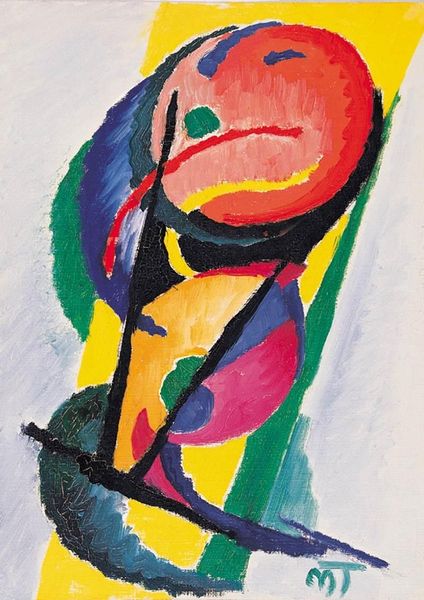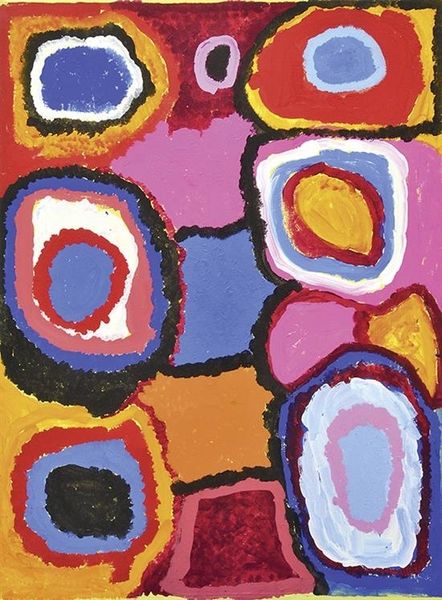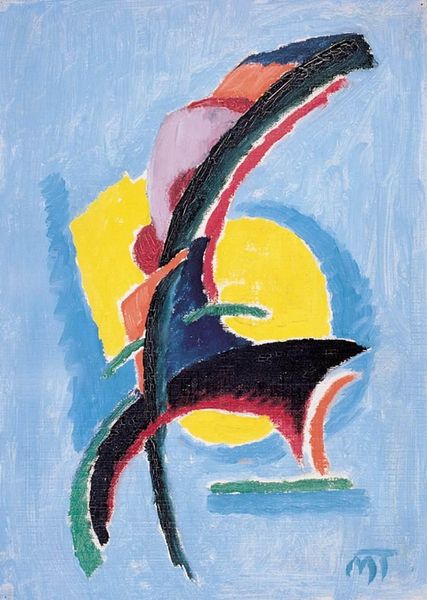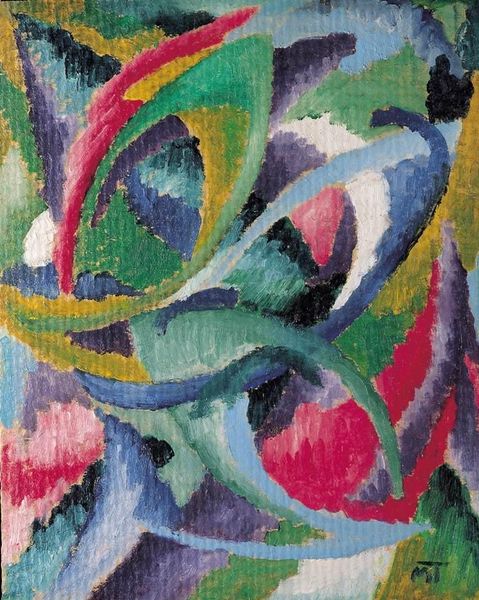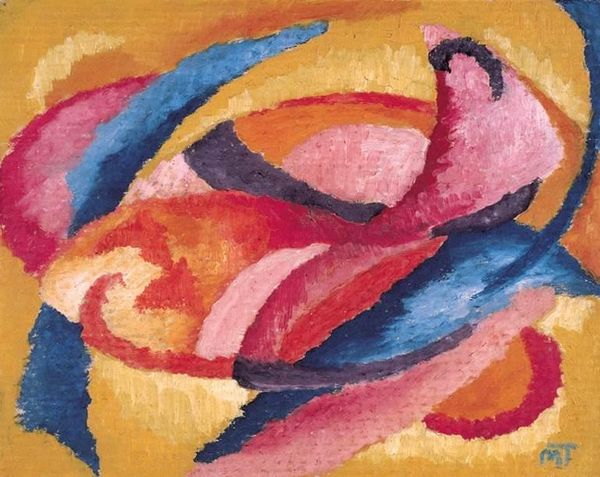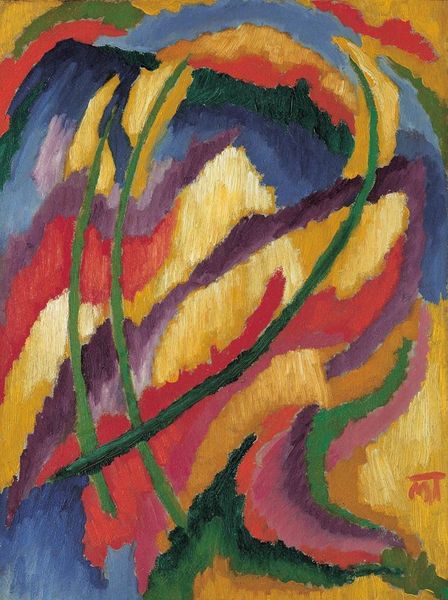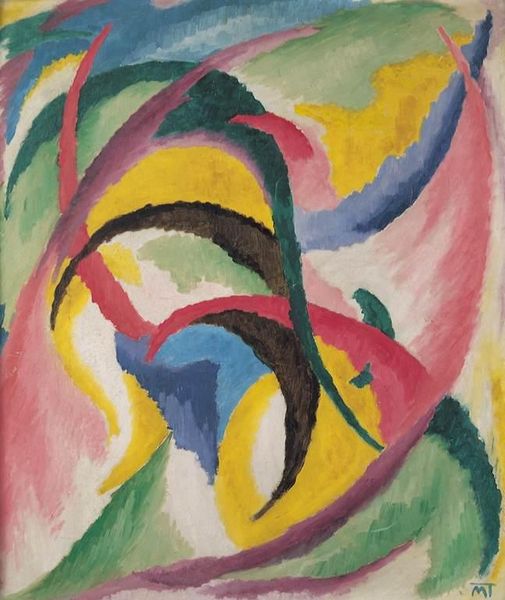
Copyright: Public domain US
Curator: "Composition," painted by Janos Mattis-Teutsch around 1920, showcases the artist's unique approach to abstraction. Painted with oil paint, the work dances between geometric structure and flowing lines. Editor: It feels…joyful, almost playful. The colors, the swirling shapes—like a garden seen through a kaleidoscope. It doesn’t take itself too seriously, does it? Curator: Mattis-Teutsch was deeply engaged with the avant-garde movements of his time, but he filtered these influences through his own spiritual and philosophical lens. This painting reflects his search for harmony and deeper meaning in a world undergoing tremendous change and trauma after the First World War. Editor: Change and trauma manifesting as cheerful abstraction! I'm struck by the boldness, or maybe it's defiance. He paints the chaos, but also offers a space where it coalesces, calms, becomes… palatable, even lovely. Look at how he uses that line—it meanders, yes, but also firmly defines those soft color fields. Was that line always at the forefront of abstraction at this time? Curator: The line holds immense significance in his artistic practice, functioning as both the structure and the driving force. By emphasizing lines, Mattis-Teutsch aimed to reduce complex emotions to a set of fundamental signs. Simultaneously, during this period, artists and thinkers alike questioned conventional modes of representation, searching for visual languages capable of expressing revolutionary experiences such as trauma, political upheaval, and the sense of the alienation, while grappling with rapid industrialization. Abstraction, in this context, served as a visual rebellion, refusing to reproduce familiar images while seeking fresh means of capturing the intricate workings of modern consciousness. Editor: It's wild to consider this an act of defiance or a form of visual rebellion! What do you think—was Mattis-Teutsch ultimately an optimist or a pessimist, hiding his darkness under this vibrant swirl? Curator: The dichotomy is what makes the piece so intriguing, I think. We look at this today and it is visually delightful and non-threatening, perhaps even easy, but at the time? It’s wrestling with ideas about representation and perception in a really disruptive way. Editor: Disruption wrapped in the guise of visual pleasure—a clever activist tactic if I ever saw one! Thanks, that helped me see a whole other layer to this artwork.
Comments
No comments
Be the first to comment and join the conversation on the ultimate creative platform.
